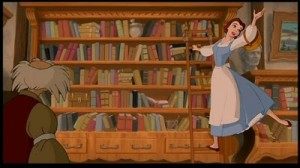
Snow White Surprises and Male Gaze (Jaurele’s Blog Post 3)
It’s been a while since I last saw Disney’s Snow White but I think I remember most of it. This is probably why the Grimm’s version we read in the Tatar book was full of surprises for me. The first major difference I noticed is that Grimm’s version is much more brutal in the original story. In Grimm’s version the queen asks the huntsman for Snow White’s lungs and liver as proof of her death, and then eats them (really the pig’s). In the Disney version she keeps just the heart in a box. I guess Disney didn’t want to include cannibalism in his first full length feature movie. (Good call, Disney.) Also, there is only one attempt on Snow White’s life in the movie, but in the Grimm’s version the queen has to come back 3 times. Plus it’s just a sleeping death in the movie, whereas the queen really wanted her dead in the Grimm’s version. The ending was also a big surprise when I read the Grimm’s version. The queen is killed by lighting in the movie, a natural phenomenon. This absolves Snow White and her prince husband since, in the Grimm’s version, she is forced to dance in hot iron shoes to her death. This tames the Disney version of the story a great deal.
In the movie the huntsman breaks down and confesses what he is meant to do, and begs for Snow White’s forgiveness. In the Grimm’s version she is the one who begs for her life and then decides to escape to the woods. She is no longer an active participant in her escape from the queen in the Disney version.
Another major difference I noticed is the presentation of the dwarves. Snow White found their house clean in Grimm’s version, but messy in the movie. This makes sense to me since it gives her more to do. In the Grimm’s version the dwarves could obviously take care of themselves. They invite Snow White to stay more out of kindness than need. Actually, there is nothing childlike about the dwarves in the original story. They seem to be capable adult dwarves. Disney gave them silly names and made them infantile in many ways, but I think it’s more fun that way. I also noticed that in the movie the prince already knew Snow White and was sad to find her dead, which is why he kissed her. In the book the prince is a stranger that kisses a dead girl he happens upon, which is pretty weird.
I have to say I never liked Snow White much. She’s annoyingly perfect and to me lacks personality. But the story is interesting in other ways. When I think of the theme of this story I keep coming back to the feminist male gaze theory. I know this was not the Grimm’s intended moral or message, but I can’t help but read fairy tales, and their modern equivalents, with a critical eye regarding gender roles. The concept first came to mind when I realized that the queen’s obsession with approval from a man trapped in a mirror drives the action of the story. She must kill Snow White in order to be found the fairest in the land, in his eyes, “or die trying”. The queen places beauty above all else. Not some intrinsic or character trait, but her outward appearance. Also, when Snow White finds herself at the dwarves’ cottage, in the original version, they invite her to stay mostly because they find her beautiful. In the book they are self-sufficient and already neat and tidy, so they didn’t really need a scullery maid. When Snow White is presumed dead and lying in her glass coffin (so that the dwarves could continue to gaze at her beautiful face even in death), she is saved because a stranger happens upon her and finds her beautiful. You can’t get more passive than dead, and she is once again saved by a man just looking at her. The Prince kisses her and they fall magically in love at first sight.


